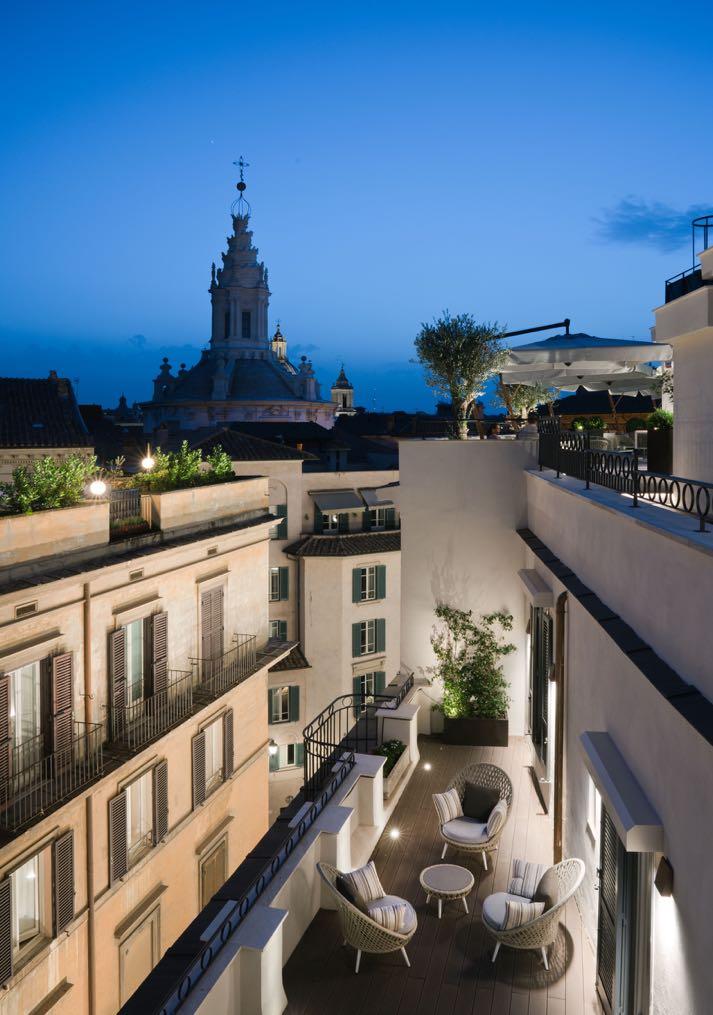
3 minute read
Artistic meld
Studio Marco Piva designed the intervention of the Pantheon Iconic Rome Hotel with the purpose of creating a contemporary product albeit complying with some traditional standards. Indeed, the challenge was to uncover the original building, which had been reshaped over the years, clean it up and recover some original architectural elements.
Advertisement
Matter is paramount and creates perceptively surprising spaces, giving them a specific weight.
Stone and marble recall the monumental nature of Rome, whereas bronze was chosen as a reference to the huge hinges on the Pantheon entrance door. A special led lighting system frames the entire ground floor area geometrically, recalling the compositional principles classic architecture is based on. Here, a perspective of bronze arches and white gypsum vaults, Sahara
Noir stoneware floors, welcomes the guest when entering the hotel. Reception and lobby desks are sculptural Calacatta-gold marble monoliths that seem to float in a shiny black lake.




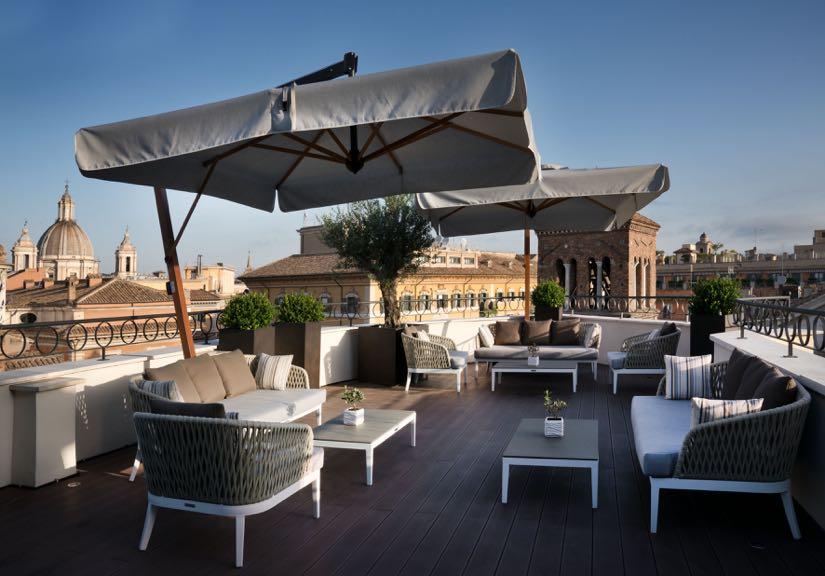
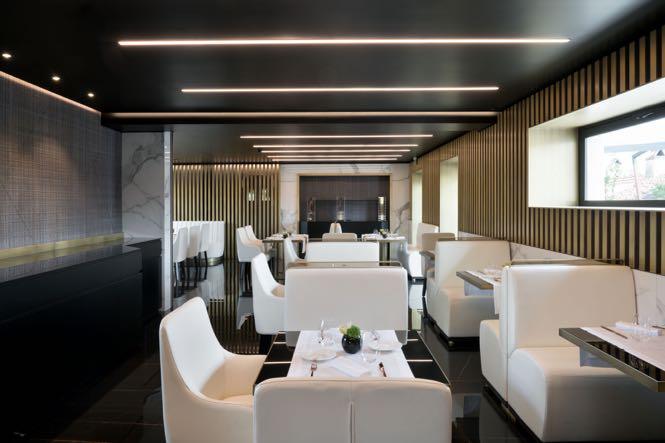
On the sixth floor, the hotel presents the Divinity Restaurant and, on the other side of the building, the Divinity Terrace Lounge Bar. Divinity Restaurant is a space that evokes the seven planetary divinities, elegant and pure marble and metals, and a view over the eternal city that is simply enchanting. The sleek lines of the restaurant and comfortable outdoor sofas make this the ideal space for business or pleasure, with a view that will quite simply take your breath away. While Divinity Terrace Lounge Bar recalls the seven planetary gods the Pantheon is consecrated to, celebrated with dedicated cocktails. The materials replicate those used in the common areas. Also here, light is created by the architectural shapes, while some elegant design chandeliers become iconic items characterising the scenes of some common areas.
The 79 sunny and spacious rooms, arranged in five floors, have a contemporary design with soft leather-covered paneling along all walls. Studio Marco Piva has developed an intense variation of colours, giving each of the five floors a specific identity, through different chromatic choices. The idea was to create mini-apartments with the functionalities and services of a luxury hotel. From this point of view, The Pantheon - Iconic Rome Hotel aims to make guests feel as if they are living in an elegant, noble Roman palace, making the most not to look like an accommodating facility. Wardrobes have been designed as minimum, independent units, aggregated in vertical blocks standing on a common base, like columns on a single pedestal. In the bathrooms, emphasis is laid on Roman classicism. The grandeur of red Lepanto marble, combined with the transparency of glass and the materiality of stoneware, recalls the traditional stone roughness “worked” by time, thus outlining a space that recalls the stone decorations of the nearby Pantheon and, in the mirror, its luminous oculus.
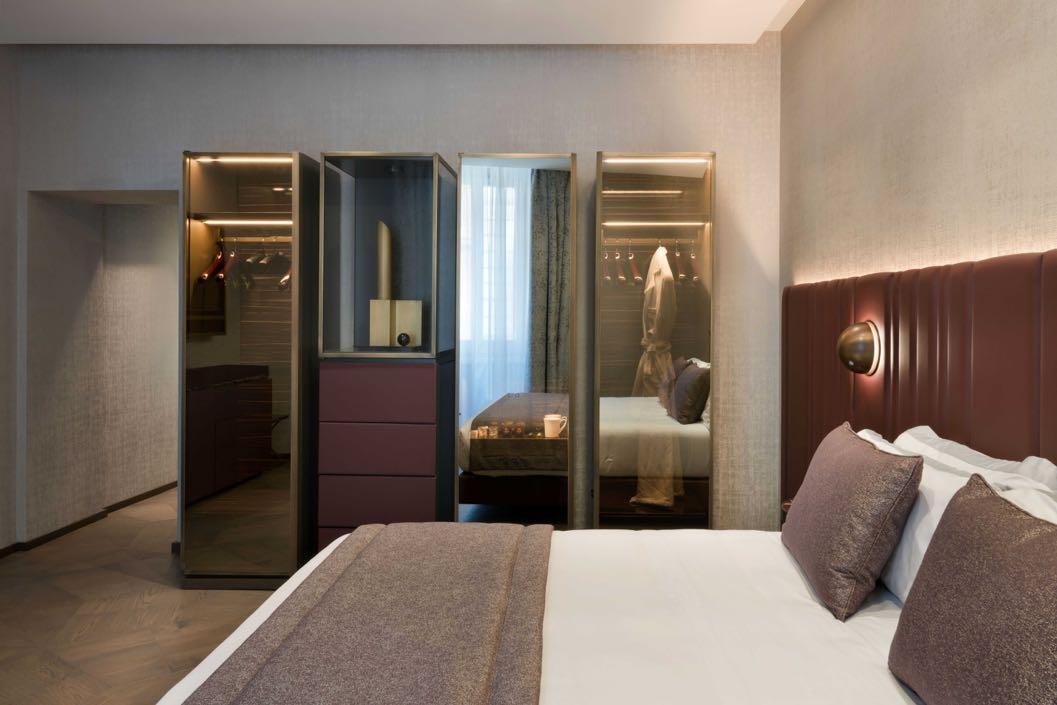
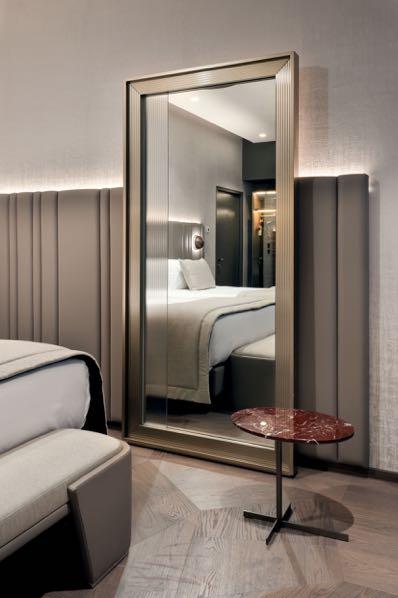

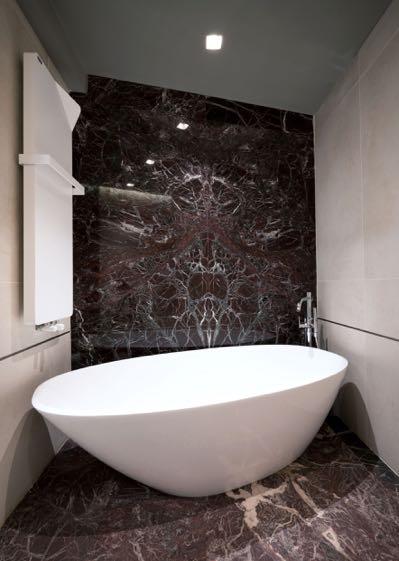

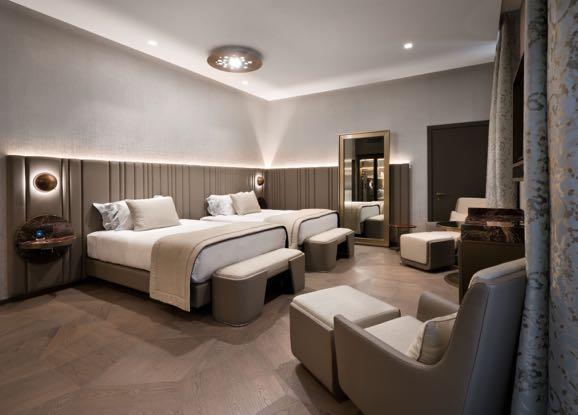

In the suites, the wardrobe system offers specialised units like frigo-bar, wine cellar, tea and coffee corner, safe and lastly, fitted into special glass cases, a collection of artworks designed by Marco Piva and taken, at style level, from the Pantheon. The artworks tell a more complete, harmonic story of the hotel, going from architecture to interiors and then on to design and art items. Reference to the outside continues in other representative room elements, like the central ceiling light: it recalls (with its graphics) the geometry of the “temple of all gods” dome and, together with the adjustable, dimmable appliques on the brass headboard contributes to create a perfect dualism between matter and light.
Address: Via di S. Chiara, 4/A, 00186 - Rome (Italy)
